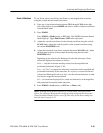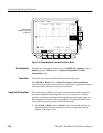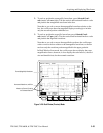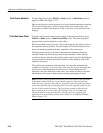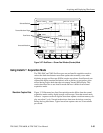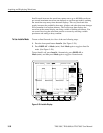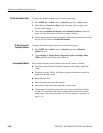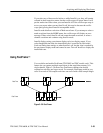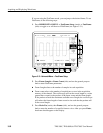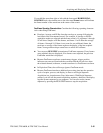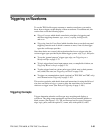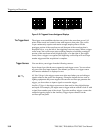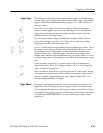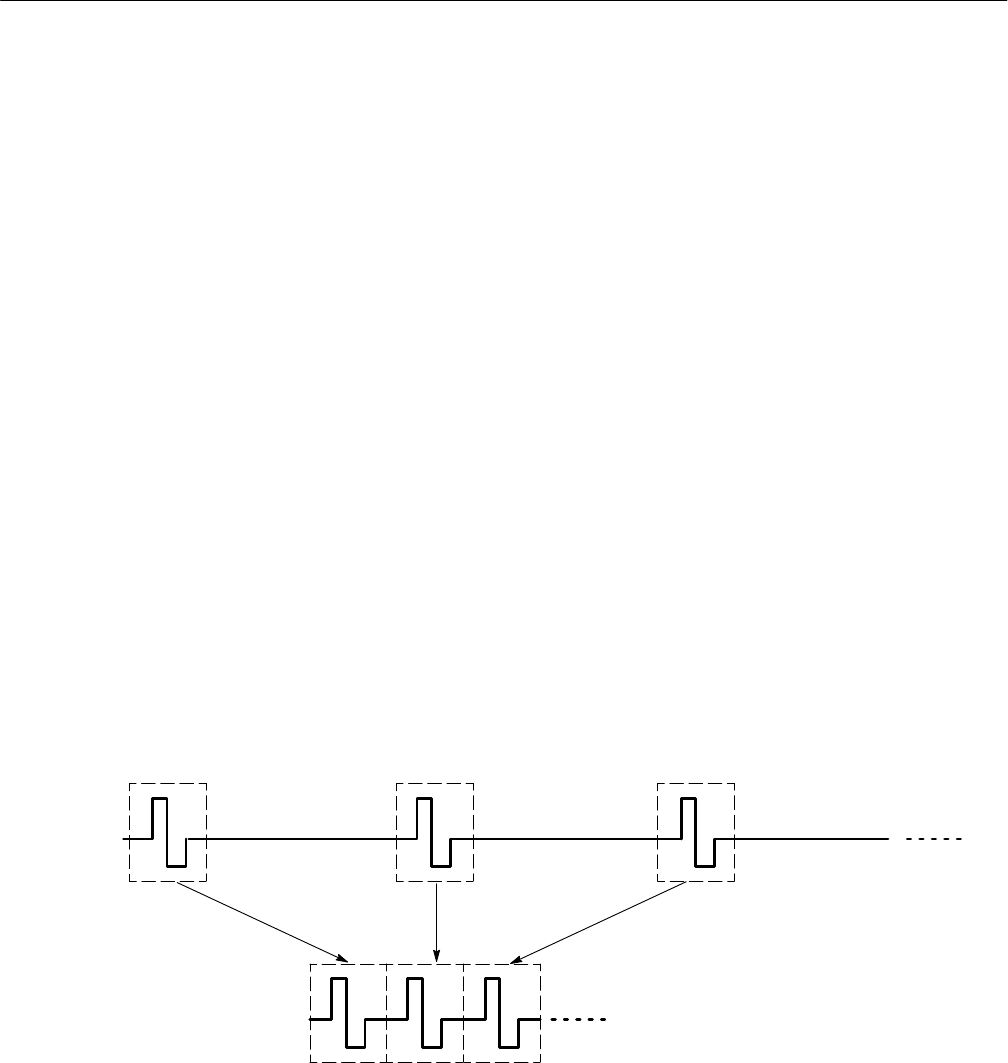
Acquiring and Displaying Waveforms
TDS 500C, TDS 600B, & TDS 700C User Manual
3–59
If you select any of these modes before or while InstaVu is on, they will remain
selected in their respective menus, but the oscilloscope will ignore them. It will
put the modes into effect when you turn InstaVu off. If the oscilloscope setup is
not as you expect when you turn InstaVu off, this may be because the oscillo-
scope quit ignoring these InstaVu incompatible modes.
InstaVu mode disallows selection of Math waveforms. If you attempt to select a
math waveform from the MORE menu, the oscilloscope will display an error
message. Either switch InstaVu off and create the math waveform, or select a
channel waveform and continue using InstaVu mode.
InstaVu displays using a persistence display style (see display menu). If you
select Intensified time base, the intensified zone is controlled by Horizontal
Scale and Delay time settings as when InstaVu is off, but the zone is masked by
the persistence display mode and cannot be seen. Turn off InstaVu to display the
intensified zone.
Using FastFrameT
You can define and enable FastFrame (TDS 500C and 700C models only). This
feature lets you capture multiple acquisitions in the acquisition memory of a
single channel. Figure 3–30 shows how FastFrame combines the desired
captured records into one larger record. For example, FastFrame would let you
store 10 records of 500 samples each into one record with a 5000 sample length.
Real Time
Fast Frame
Figure 3–30: Fast Frame



